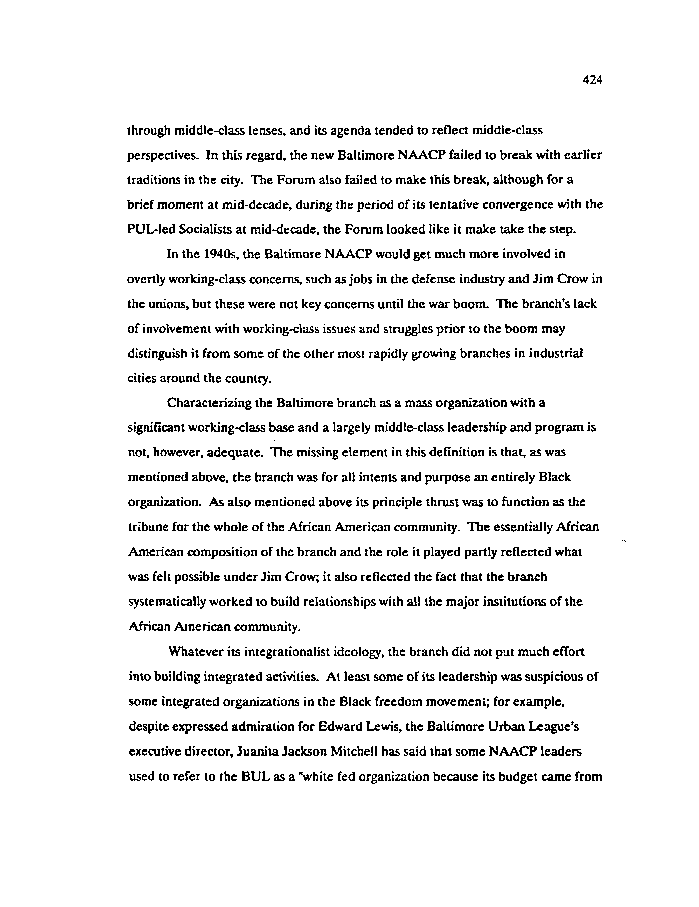|
424
through middle-class lenses, and its agenda tended to reflect middle-class
perspectives. In this regard, the new Baltimore NAACP failed to break with earlier
traditions in the city. The Forum also failed to make this break, although for a
brief moment at mid-decade, during the period of its tentative convergence with the
PUL-led Socialists at mid-decade, the Forum looked like it make take the step.
In the 1940s, the Baltimore NAACP would get much more involved in
overtly working-class concerns, such as jobs in the defense industry and Jim Crow in
the unions, but these were not key concerns until the war boom. The branch's lack
of involvement with working-class issues and struggles prior to the boom may
distinguish it from some of the other most rapidly growing branches in industrial
cities around the country.
Characterizing the Baltimore branch as a mass organization with a
significant working-class base and a largely middle-class leadership and program is
not, however, adequate. The missing element in this definition is that, as was
mentioned above, the branch was for all intents and purpose an entirely Black
organization. As also mentioned above its principle thrust was to function as the
tribune for the whole of the African American community. The essentially African
American composition of the branch and the role it played partly reflected what
was felt possible under Jim Crow; it also reflected the fact that the branch
systematically worked to build relationships with all the major institutions of the
African American community.
Whatever its integrationalist ideology, the branch did not put much effort
into building integrated activities. At least some of its leadership was suspicious of
some integrated organizations in the Black freedom movement; for example,
despite expressed admiration for Edward Lewis, the Baltimore Urban League's
executive director, Juanita Jackson Mitchell has said that some NAACP leaders
used to refer to the BUL as a "white fed organization because its budget came from
|

